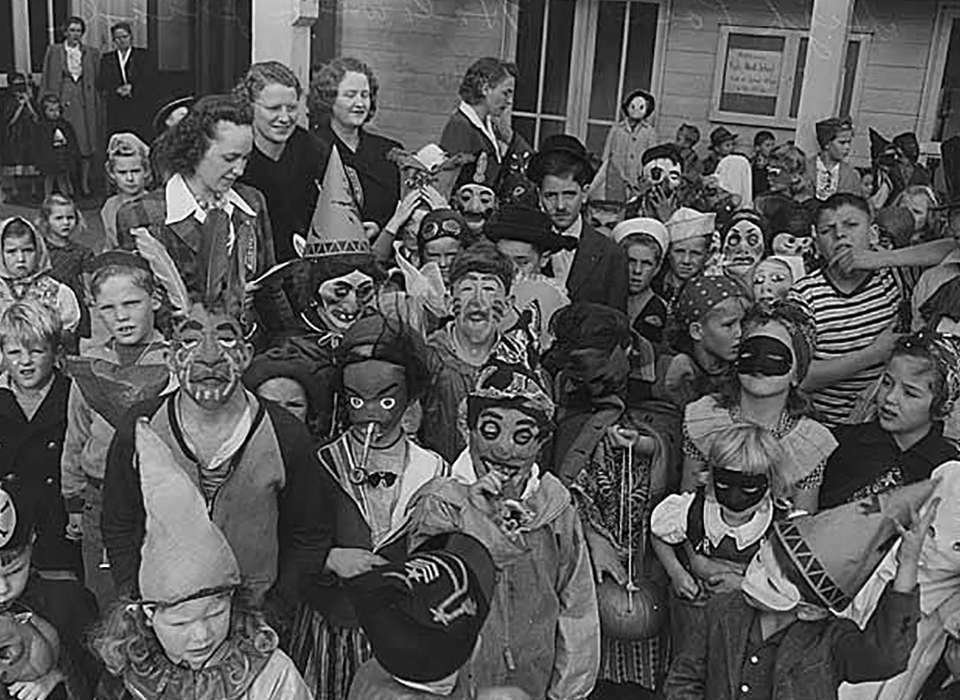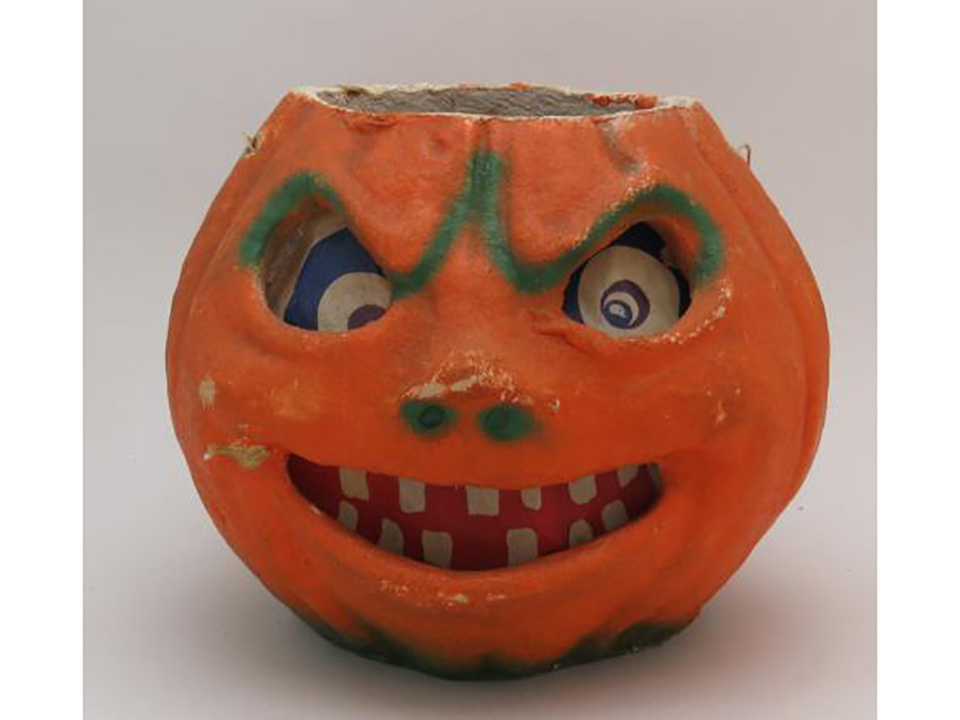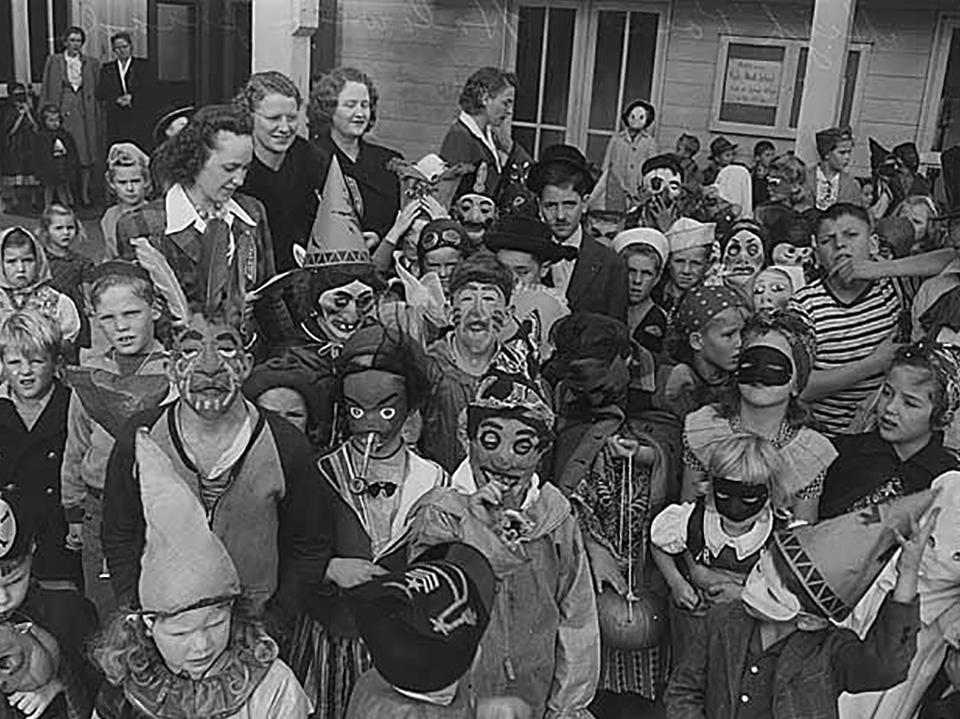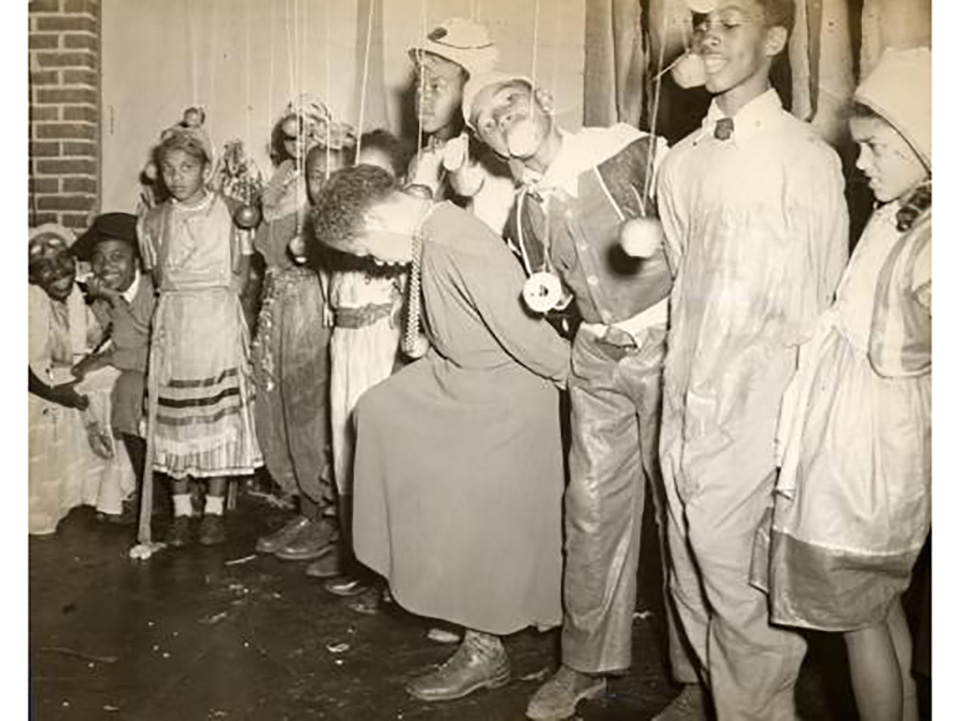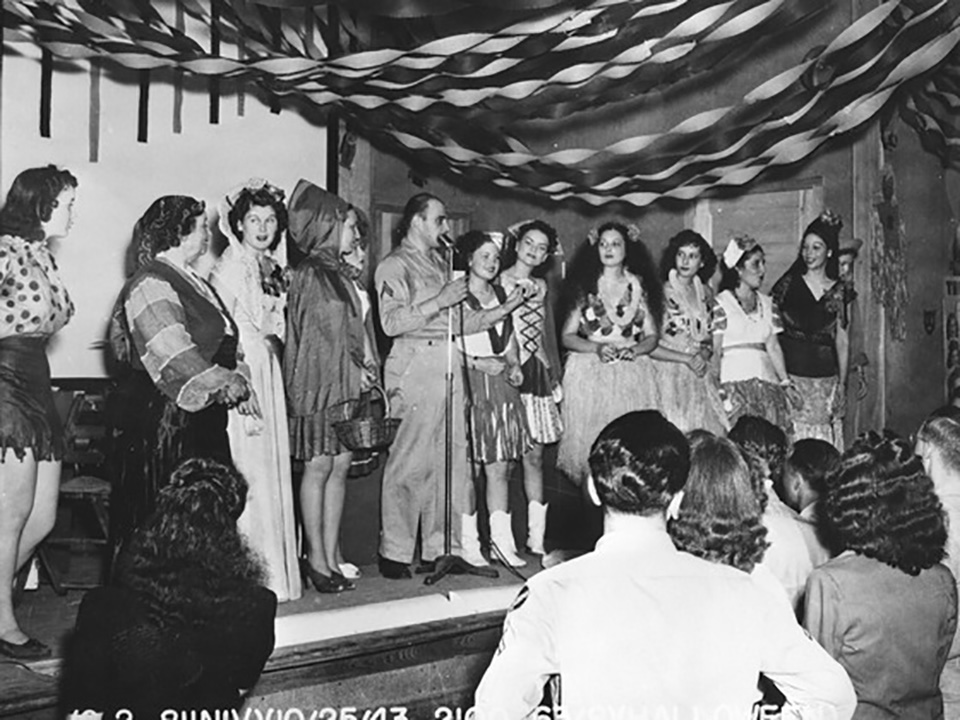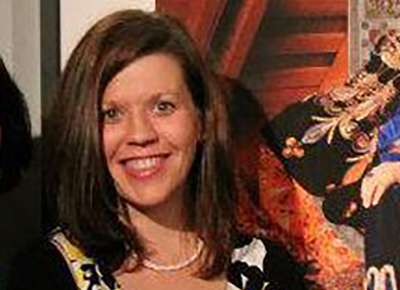Many of us grow up with memories of Halloween and have ideas of what it is all about and why we celebrate it. Today we are thinking about how this year’s festivities of trick-or-treating may be different from recent years, but this is not the first time that Halloween has had to make some adjustments. From 1942-1944, many Americans experienced a different Halloween on the Home Front than they had before the war. The similarities and differences could be seen in the types of activities, decorations and costumes for the celebration, as well as through the war’s impact on communities at the time.
What images do you think of when you think of Halloween? Perhaps it is images of children in costumes walking down the sidewalks in their neighborhood, or parents driving their children from house to house, in order to chant the traditional phrase “trick or treat.” During the war years, there were many articles from across the country that detailed Halloween activities, primarily parties for children and others for adults only. One party geared towards adults was described in Muncie, Indiana’s The Muncie Sunday Star on October 25, 1942. The celebration was replete with “Traditional Halloween colors, orange and black were used throughout the entertaining rooms and black cats and pumpkins were placed at various intervals about the living room. Guests were masked and taken through a ghost house, and costume prizes were awarded…During the social hour, games were played and prizes awarded.”
Paper-mache jack-o’-lantern. Image courtesy of Division of Cultural and Community Life, National Museum of American History, Smithsonian Institution.
Most of the children’s parties were organized by clubs and community organizations, places of worship, and school groups and PTAs. In 1942, some communities cancelled Halloween, which meant no parades and large public gatherings—though house parties were still allowed. Other municipalities still held festivities and advertised Halloween parades. In Clifton, New Jersey, The Morning Call promoted a parade where children could take part in a 7:30 a.m. parade organized by the Kiwanis that would start at a local park and end at a school playground. Upon arrival at the school, “the paraders will move across the reviewing stand upon which Kiwanians will observe costumes.” The Kiwanians then chose a winner. Halloween festivities, however, were not the same throughout the country. In the American South, segregation also played a part in creating a difference from today’s observances. The News and Observer, a paper from Raleigh, North Carolina, outlined city plans for Halloween on October 27, 1942. In this paper, there was a delineation of programs and activities for children who were white and children who were black.
Today many children pick out their costumes by either perusing advertisements in the newspaper, searching online, or going to the department store to pick out what they want to wear for this occasion. Finding out what costumes were popular in the 1940s is not as easy as it is today. Most of the images we can find of Halloween costumes come from newspaper articles that ran after October 30. These black and white images during the war years show an array of homemade costumes.
Children in Halloween costumes at High Point, Seattle, 1943. Image courtesy of MOHAI, Seattle Post-Intelligencer Collection, pi23331.
In these photos we can see some trends in what characters children wanted to be for Halloween. Most of the costumes are ones that may be familiar to many of us, such as animals, pirates, ghosts, witches, and clowns. Some costumes consisted of racial and cultural stereotypes, which would be seen as extremely insensitive today. Other costumes showed the influence of the world war, with children dressing up in patriotic costumes such as Uncle Sam, Red Cross nurses, and camouflaged commandos.
Children play a game with apples at a Halloween Party at Frederick Douglas Community Center in DC sometime in 1940. Image courtesy of Anacostia Community Museum, Smithsonian Institution.
Costumes were not just worn for parades and house parties, even local movie theaters got into the act. On October 31, 1942, one theater in Kansas City, Missouri advertised a costume contest for Halloween in conjunction with a Halloween party and matinee. As part of the war effort, this same theater advertised in The Kansas City Times that attendees could receive a free bag of popcorn if they brought at least one pound of scrap! Halloween movies were also popular with theatergoers. Wartime thrillers included The Glass Key (1942), The Boogie Man Will Get You (1942), A Scream in the Dark (1943), The Mark of the Whistler (1944), and The Woman in the Window (1944), and for those who preferred romantic comedies, I Married a Witch (1942).
Halloween party for the troops, October 25, 1943 courtesy of the Florida State Archives.
Similar to today, there were concerns of Halloween pranks during the war years. Warnings and preparations were part of the news. Halloween curfews were created and enforced to help deter Halloween pranksters. Some newspapers like The Des Moines Register in Iowa even compared the pranksters to saboteurs who were “helping the Axis.” All of this may seem a tad harsh today, but in a world where many items were rationed and personal property could not be as easily replaced, the need to keep vandalism in check was extremely important. If someone decided to TP a tree when it became difficult for us to purchase a package or two a few months ago, we would have all been more than mildly annoyed. The Des Moines Register even discouraged tricks of ringing doorbells late at night because it could disrupt the sleep of someone who needed their rest to work in a factory producing much-needed munitions for the war effort. Does this mean that vandalism took a hiatus? Absolutely not! Reports of damage in Alexandria, Louisiana were printed in The Town Talk on November 2, 1942. During Halloween, pranks included “soaping windows, turning over garbage cans, taking chairs and benches and other things left out in the open. There were some cases of actual vandalism reported of things being taken or broken.” Not only were warnings included in newspapers across the United States, but verbal reminders at local schools by teachers and principals were also given. The Oshkosh Northwestern newspaper in Oshkosh, Wisconsin carried an article in 1942 about American youth in some cities across the United States responding to local officials' concerns about vandalism and sabotage, by organizing campaigns against vandalism and arranging scrap drives.
With the tricks, there are always the treats. One thing that was different from today was the rationing of some of the goods that we take for granted. When it comes to Halloween, sugar is king and that was one of the first grocery items rationed during the war years. How did rationing work during Halloween? As there were still Halloween parties taking place in homes, baked goods became an important part of the fare that hosts served to costumed guests. Ration friendly recipes abounded in newspapers leading up to the holiday. Everything from popcorn balls, to donuts and cider, to Halloween cakes and spiced cookies could be found adorning the pages for papers across the United States.
Halloween today still holds some of the traditions that were familiar during the 1940s. In a year in which we are facing times of hardship and uncertainty, there is a need to have some semblance of normalcy when celebrating holidays in order to keep our spirits up. This is just as important now as it was during the war years. Although there were wartime challenges and restrictions on how Halloween could be celebrated in the 1940s, adults, families, and children were still able to make their festivities special. Today, even with our new challenges, we can still create our own joy and develop some new traditions while observing the different phases in our cities and towns. The spirit of Halloween is truly what we can dream and conjure it into being.
Recommended Reading
“City Endorses Plan for Halloween Party: Commissioners Urge Everyone to Attend Celebration Sponsored by YBMC.” The News and Observer, Raleigh, North Carolina, October 27, 1942, Page 18
“Costumed Children to Have Hallowe’en Parade, Party.” The Morning Call, Paterson, New Jersey. October 30, 1942, page 22
“Kids!—Don’t Help the Axis on Halloween.” The Des Moines Register, Des Moines, Iowa, October 29, 1942. Page 11
“M.P.C. Halloween Affair.” The Muncie Sunday Star, Muncie, Indiana, October 25, 1942. Page 16
“Youngsters of America Plan Prankless Halloween.” The Oshkosh Northwestern, Oshkosh, Wisconsin, October 28, 1942. Page 3.

Louisiana Spotlight: Tulane Unit
In 1942 the 24th General Hospital was created by doctors from Tulane University and nurses from New Orleans. Serving in the Mediterranean theater, they were known as the “Tulane Unit.”
Abbie Edens
Abbie Edens is the former Director of Education at The National WWII Museum.
Cite this article:
MLA Citation:
APA Citation:
Chicago Style Citation:
